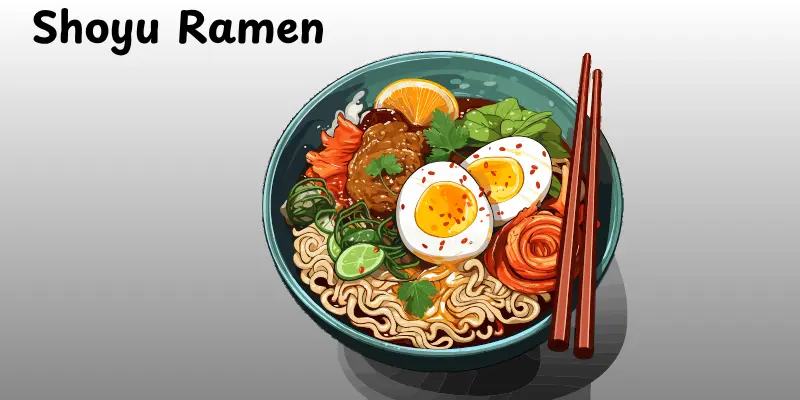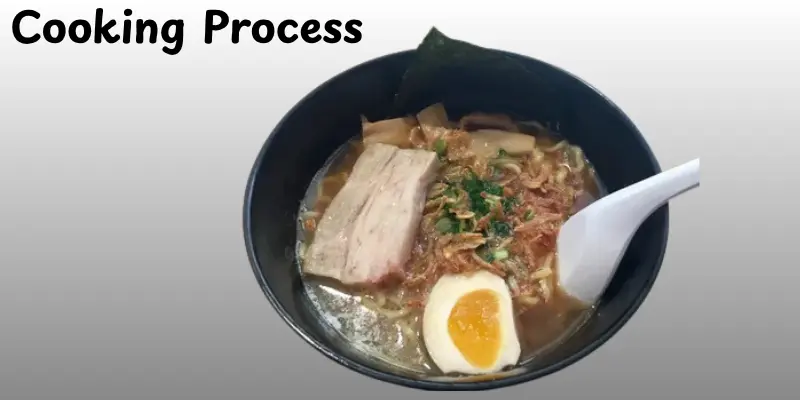Shoyu Ramen Hot Pot: A Cozy Japanese Comfort You’ll Crave
Published: 8 Oct 2025
Did you know Shoyu Ramen Hot Pot combines two of Japan’s most beneficial foods into one delicious meal? This tasty combination of soy sauce broth, noodles, and fresh vegetables provides a warm, rich dining experience perfect for any season. It’s not just simply food; it’s comfort in a bowl.
In this guide, you will learn what makes this dish special, the ingredients you need, and simple steps to make it at home. Get ready to enjoy the perfect mix of rich broth, tender noodles, and fresh toppings — all cooked and shared at the table!
What Is Shoyu Ramen Hot Pot?
Shoyu Ramen Hot Pot is a Japanese cuisine that combines the soy sauce-based taste of shoyu ramen with the interactive cooking method of a hot pot. It involves noodles, vegetables, and meats cooked together in a flavorful soy-infused broth, creating a warm, comforting meal shared at the table.

Shoyu Ramen Hot Pot originated from Japan’s need for ease and connection through food. Ramen first gained national attention in the early 20th century, but hot pot, or nabemono, has been a winter meal for centuries. Over time, creative cooks started combining the two—ramen’s signature soy sauce broth and the communal joy of hot pot dining—to create this joyful fusion food that is today famous in Japan and across the world.
Ingredients You’ll Need
To make a delicious Shoyu Ramen Hot Pot, you will need a combination of rich broth, flavorful seasonings, and fresh toppings. These ingredients come together to create that deep soy-based flavor and cozy hot pot experience everyone loves.
- Broth Base: Use chicken stock, dashi, or a mix of both for a rich, savory base.
- Tare / Seasoning: Combine soy sauce, sake, and mirin—a trio inspired by Serious Eats and Just One Cookbook—to build the signature shoyu flavor.
- Noodles: Add fresh or dried ramen noodles; cook them separately or directly in the hot pot.
- Protein & Vegetables: Include thinly sliced beef, chicken, tofu, mushrooms, napa cabbage, bok choy, carrots, and green onions for balance and texture.
- Toppings & Garnishes: Finish with soft-boiled eggs, sesame seeds, nori strips, chili oil, or scallions for extra depth and aroma.
- Optional Extras / Swaps: Try a vegetarian version with mushroom or kombu broth, or make it spicy by adding chili paste or rayu oil.
Step-by-Step Cooking Process

Making Shoyu Ramen Hot Pot is simple and fun. Follow these easy steps to bring this comforting Japanese dish to life right at your table.
Prepare the Broth
Start by heating chicken stock or dashi in a large pot. Let it come to a gentle simmer over medium heat. This will be the flavorful base that ties all the ingredients together.
Mix in Tare / Seasoning
In a small bowl, mix soy sauce, sake, and mirin. Add this seasoning blend (tare) to the simmering broth. Taste and adjust the saltiness or sweetness as you like. The broth should be rich, slightly salty, and full of umami.
Cook Protein & Vegetables
Add your protein—thinly sliced beef, chicken, or tofu—first so it cooks evenly. Then toss in vegetables like napa cabbage, mushrooms, and bok choy. Let everything simmer until tender and flavorful, soaking up the soy-based broth.
Add Noodles
Once the proteins and veggies are ready, add ramen noodles to the pot. Cook just until soft, about 2–3 minutes. Stir gently so the noodles absorb the broth without breaking apart.
Serve & Garnish
Ladle the hot pot into bowls, making sure everyone gets a mix of noodles, broth, and toppings. Finish with soft-boiled eggs, nori strips, sesame seeds, or chili oil for an authentic touch. Serve hot and enjoy this cozy, flavor-packed meal together.
Why You will Love This Dish
Shoyu Ramen Hot Pot is more than simply a meal; it’s an experience. The warm, soy-flavored broth fills your kitchen with an attractive aroma, and the combination of noodles, meats, and vegetables creates a perfect balance of comfort and taste. You can prepare it right at the table, which makes it enjoyable for family and friends to share. It’s also easy to customize—go light and simple or hot and aggressive. Every bite is cozy, rich, and deeply satisfying, especially on a chilly day.
Tips & Tricks for Success
Want to make your Shoyu Ramen Hot Pot taste like it came straight from a Japanese kitchen? A few simple techniques can take your dish from good to unforgettable. Follow these helpful tips to get the perfect flavor, texture, and balance every time.
- Use quality soy sauce: A good shoyu adds depth and true umami flavor to your broth.
- Simmer, don’t boil: Gentle heat keeps the broth clear and prevents overcooking.
- Slice ingredients thinly: Thin cuts of meat and vegetables cook evenly and quickly.
- Cook noodles last: Add them near the end to keep their texture firm and springy.
- Taste as you go: Adjust the soy, mirin, or sake until the flavor suits your liking.
- Keep toppings fresh: Add garnishes like scallions or nori right before serving for brightness.
- Customize your broth: Try adding chili oil for spice or a dash of sesame for nuttiness.
- Share the experience: Hot pot is meant to be enjoyed together—cook, eat, and chat around the pot!
Flavor Variations & Regional Twists
One of the best things about Shoyu Ramen Hot Pot is how easily you can make it your own. From bold and spicy flavors to lighter seafood versions, each variation brings a new twist while keeping that cozy hot pot feel alive.
- Miso Ramen Hot Pot: A richer and creamier version made with fermented soybean paste (miso) instead of soy sauce. It offers a deeper, slightly sweet flavor compared to shoyu’s light and savory taste — a popular take seen on Cherry on My Sundae.
- Spicy Version: Add chili paste, rayu oil, or sliced fresh chili to the broth for a fiery kick. Perfect for spice lovers who want extra warmth and intensity in every sip.
- Seafood or Tofu Base: Swap meat for shrimp, scallops, fish, or tofu to create a lighter yet flavorful version. The seafood essence blends beautifully with the soy-based broth.
- Regional Japanese Styles: Explore local ramen traditions — shoyu (soy sauce) for balance, miso for richness, and tonkotsu (pork bone) for creamy depth. Each brings its own character to the hot pot experience.
Serving & Presentation Ideas
The beauty of Shoyu Ramen Hot Pot lies in both its flavor and the way it’s shared. Whether you serve it bubbling at the table or plated beautifully in bowls, presentation makes the meal even more inviting and memorable.
- Serve at the Table in a Shared Pot: Bring the hot pot to the center of the table and let everyone cook and eat together. It creates a cozy, communal dining experience.
- Portion into Individual Bowls: Ladle a mix of broth, noodles, and toppings into small bowls so each person enjoys a perfect balance of flavors.
- Garnish for Color and Flavor: Add green onions, nori strips, soft-boiled egg halves, or sesame seeds right before serving to enhance taste and presentation.
- Complete the Meal: Pair your hot pot with a light salad, Japanese pickles, or rice on the side for a full, balanced meal that complements the savory broth perfectly.
Conclusion
So guys, in this article, we have covered Shoyu Ramen Hot Pot in detail. It’s one of those dishes that warms your heart as much as your stomach. I personally recommend trying it on a cozy evening with friends or family—you will love the aroma and the togetherness it brings. Give it a try this weekend and experience the comfort of homemade Japanese flavor in every bite!
FAQs
Shoyu ramen hot pot uses a soy sauce–based broth, giving it a clear, savory flavor. Miso ramen hot pot, on the other hand, has a richer, creamier taste from fermented soybean paste.
Yes! Simply use vegetable or kombu dashi broth and replace meat with tofu, mushrooms, or plant-based protein. It’s just as hearty and flavorful.
Thinly sliced beef, pork, or chicken cook quickly and absorb the soy-based broth beautifully. You can also mix in seafood for a lighter, coastal flavor.
It usually takes 25 to 30 minutes from start to finish. Most of the time is spent simmering the broth and gently cooking the ingredients.
Yes, store leftovers in an airtight container in the fridge for up to 2 days. Reheat gently on the stove to keep the noodles soft and the broth flavorful.
Some versions of Buldak ramen, especially the extra spicy ones, were temporarily banned in certain countries due to their extremely high chili content. Officials considered them too spicy for safe consumption, especially for children.
The four main ramen types are Shoyu (soy sauce), Shio (salt), Miso (fermented soybean paste), and Tonkotsu (pork bone). Each type has a unique broth flavor, ranging from light and clear to rich and creamy.
Use fresh ramen noodles for the best texture. If unavailable, instant or udon noodles work well too—just avoid overcooking them.
The broth should be balanced—mildly salty with a hint of sweetness. Add chili oil or paste if you prefer more heat.
Reheat the broth and toppings separately from the noodles. Add noodles only when the broth is hot to keep them firm and springy.

- Be Respectful
- Stay Relevant
- Stay Positive
- True Feedback
- Encourage Discussion
- Avoid Spamming
- No Fake News
- Don't Copy-Paste
- No Personal Attacks

- Be Respectful
- Stay Relevant
- Stay Positive
- True Feedback
- Encourage Discussion
- Avoid Spamming
- No Fake News
- Don't Copy-Paste
- No Personal Attacks





